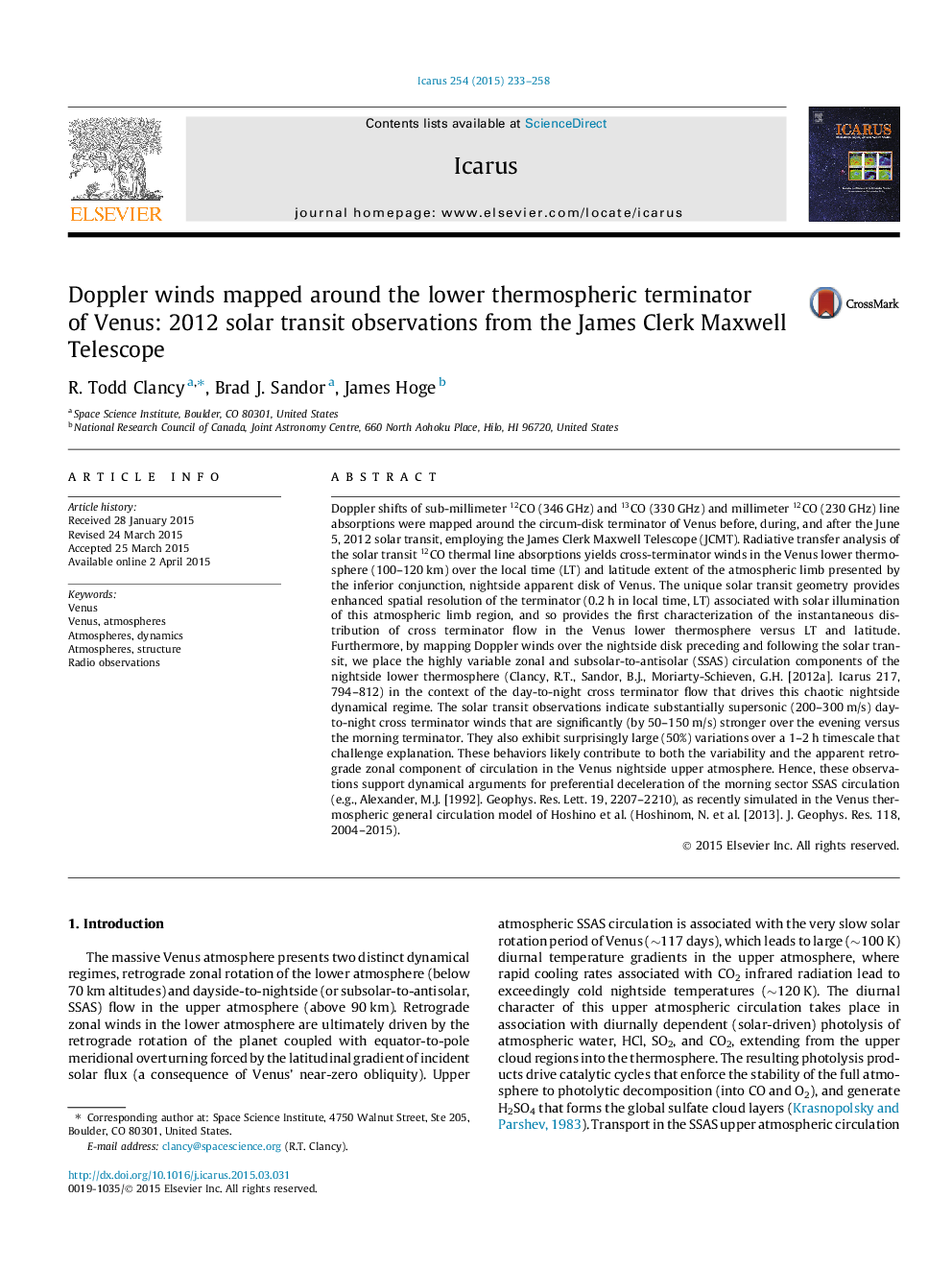| Article ID | Journal | Published Year | Pages | File Type |
|---|---|---|---|---|
| 8136313 | Icarus | 2015 | 26 Pages |
Abstract
Doppler shifts of sub-millimeter 12CO (346Â GHz) and 13CO (330Â GHz) and millimeter 12CO (230Â GHz) line absorptions were mapped around the circum-disk terminator of Venus before, during, and after the June 5, 2012 solar transit, employing the James Clerk Maxwell Telescope (JCMT). Radiative transfer analysis of the solar transit 12CO thermal line absorptions yields cross-terminator winds in the Venus lower thermosphere (100-120Â km) over the local time (LT) and latitude extent of the atmospheric limb presented by the inferior conjunction, nightside apparent disk of Venus. The unique solar transit geometry provides enhanced spatial resolution of the terminator (0.2Â h in local time, LT) associated with solar illumination of this atmospheric limb region, and so provides the first characterization of the instantaneous distribution of cross terminator flow in the Venus lower thermosphere versus LT and latitude. Furthermore, by mapping Doppler winds over the nightside disk preceding and following the solar transit, we place the highly variable zonal and subsolar-to-antisolar (SSAS) circulation components of the nightside lower thermosphere (Clancy, R.T., Sandor, B.J., Moriarty-Schieven, G.H. [2012a]. Icarus 217, 794-812) in the context of the day-to-night cross terminator flow that drives this chaotic nightside dynamical regime. The solar transit observations indicate substantially supersonic (200-300Â m/s) day-to-night cross terminator winds that are significantly (by 50-150Â m/s) stronger over the evening versus the morning terminator. They also exhibit surprisingly large (50%) variations over a 1-2Â h timescale that challenge explanation. These behaviors likely contribute to both the variability and the apparent retrograde zonal component of circulation in the Venus nightside upper atmosphere. Hence, these observations support dynamical arguments for preferential deceleration of the morning sector SSAS circulation (e.g., Alexander, M.J. [1992]. Geophys. Res. Lett. 19, 2207-2210), as recently simulated in the Venus thermospheric general circulation model of Hoshino et al. (Hoshinom, N. et al. [2013]. J. Geophys. Res. 118, 2004-2015).
Related Topics
Physical Sciences and Engineering
Earth and Planetary Sciences
Space and Planetary Science
Authors
R. Todd Clancy, Brad J. Sandor, James Hoge,
